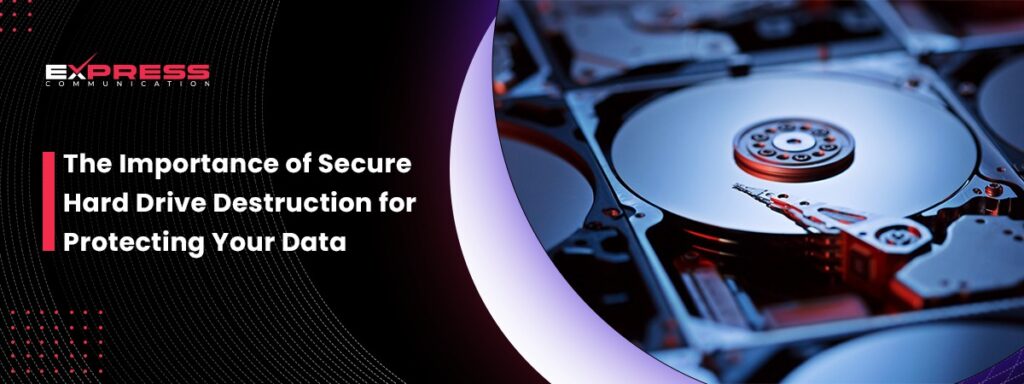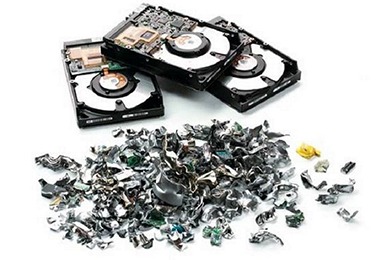
Have you ever thought about what happens to your old computer or laptop once you replace it? Many people don’t realize that even after you delete files or format a hard drive, sensitive data can still be retrieved by someone who knows what they’re doing. This is where secure hard drive destruction and data sanitization come in. In today’s digital age, protecting your data is more important than ever. Let’s explore why secure hard drive destruction is crucial for keeping your data safe.
Table of Contents
What is Data Sanitization?
Data sanitization is the process of making data on a storage device unreadable. When we talk about data sanitization, it means ensuring that data is not just deleted but destroyed in such a way that it cannot be recovered. There are several methods to sanitize data, including physical destruction and digital erasure techniques. Secure hard drive destruction is a key method of data sanitization.
Why is Data Sanitization Important?
- Preventing Identity Theft: Identity theft is a growing concern. If someone gets access to your personal information, they could steal your identity and commit fraud in your name. Old hard drives can contain sensitive data such as social security numbers, bank account details, and passwords. Securely destroying these hard drives ensures that your personal information doesn’t fall into the wrong hands.
- Protecting Business Information: For businesses, the stakes are even higher. Companies store a lot of sensitive information on their hard drives, from employee records to customer data and financial information. If this data is not properly destroyed, it can lead to data breaches and loss of trust from customers. This can have severe financial and reputational consequences.
- Compliance with Regulations: There are various laws and regulations that require businesses to protect sensitive data. For example, the General Data Protection Regulation (GDPR) in Europe and the Health Insurance Portability and Accountability Act (HIPAA) in the United States have strict rules about how personal data should be handled and destroyed. Failing to comply with these regulations can result in hefty fines and legal issues.
Methods of Data Sanitization
There are several ways to ensure data is properly sanitized from hard drives. These methods vary in terms of cost, effectiveness, and environmental impact.
- Physical Destruction: This is one of the most effective ways to ensure data cannot be recovered. Physical destruction involves shredding, crushing, or incinerating the hard drive. Once a hard drive is physically destroyed, it is virtually impossible to retrieve any data from it.
- Degaussing: This method uses a strong magnetic field to erase data from magnetic storage devices. Degaussing is effective for certain types of hard drives, but it doesn’t work on solid-state drives (SSDs).
- Software-Based Data Erasure: This method involves using software tools to overwrite existing data on the hard drive. While this can be effective for sanitizing data, it requires specialized software and multiple passes to ensure that data is completely unrecoverable.
The Risks of Not Properly Destroying Hard Drives
Not properly destroying hard drives can lead to several risks, both for individuals and businesses. Some of the key risks include:
- Data Breaches: One of the biggest risks is that of data breaches. If sensitive data is not properly destroyed, it can be accessed by unauthorized individuals. This can lead to financial losses, legal consequences, and damage to reputation.
- Loss of Confidential Information: For businesses, confidential information such as trade secrets, business plans, and customer data can be compromised. This can have a significant impact on a company’s competitive edge and its relationship with customers.
- Legal Consequences: As mentioned earlier, failing to comply with data protection regulations can result in legal consequences. Businesses may face fines, penalties, and lawsuits if they fail to properly destroy sensitive data.
Best Practices for Secure Hard Drive Destruction
To ensure your data is properly destroyed, it’s important to follow best practices for hard drive destruction. Here are some tips to help you get started:
- Use Professional Services: Consider using professional data destruction services that specialize in hard drive destruction. These services have the tools and expertise to ensure that data is completely destroyed and cannot be recovered.
- Verify Data Destruction: Always verify that data has been properly destroyed. Professional services should provide a certificate of destruction that confirms the hard drive has been securely destroyed.
- Follow a Data Destruction Policy: For businesses, it’s important to have a clear data destruction policy in place. This policy should outline the steps to be taken to ensure data is securely destroyed and should be followed by all employees.
- Stay Updated on Regulations: Data protection regulations can change, so it’s important to stay updated on the latest requirements. Ensure that your data destruction practices comply with current laws and regulations.
Environmental Considerations
While it’s important to ensure data is securely destroyed, it’s also important to consider the environmental impact of hard drive destruction. Physical destruction methods can generate electronic waste, which can be harmful to the environment if not disposed of properly. Here are some ways to minimize the environmental impact:
- Recycle: Ensure that destroyed hard drives are recycled properly. Many professional data destruction services also offer recycling options to help minimize electronic waste.
- Choose Eco-Friendly Methods: Consider using eco-friendly data destruction methods, such as software-based data erasure, which do not generate physical waste.
- Support Sustainable Practices: Support companies and services that prioritize sustainable and environmentally friendly practices in their data destruction processes.
Conclusion
In today’s digital world, protecting your data is more important than ever. Secure hard drive destruction is a crucial step in ensuring that your sensitive information does not fall into the wrong hands. By following best practices for data sanitization and considering the environmental impact of hard drive destruction, you can help protect your personal and business information while also supporting a sustainable future. Whether you are an individual or a business, make sure that your old hard drives are properly destroyed to safeguard your data and comply with data protection regulations.





